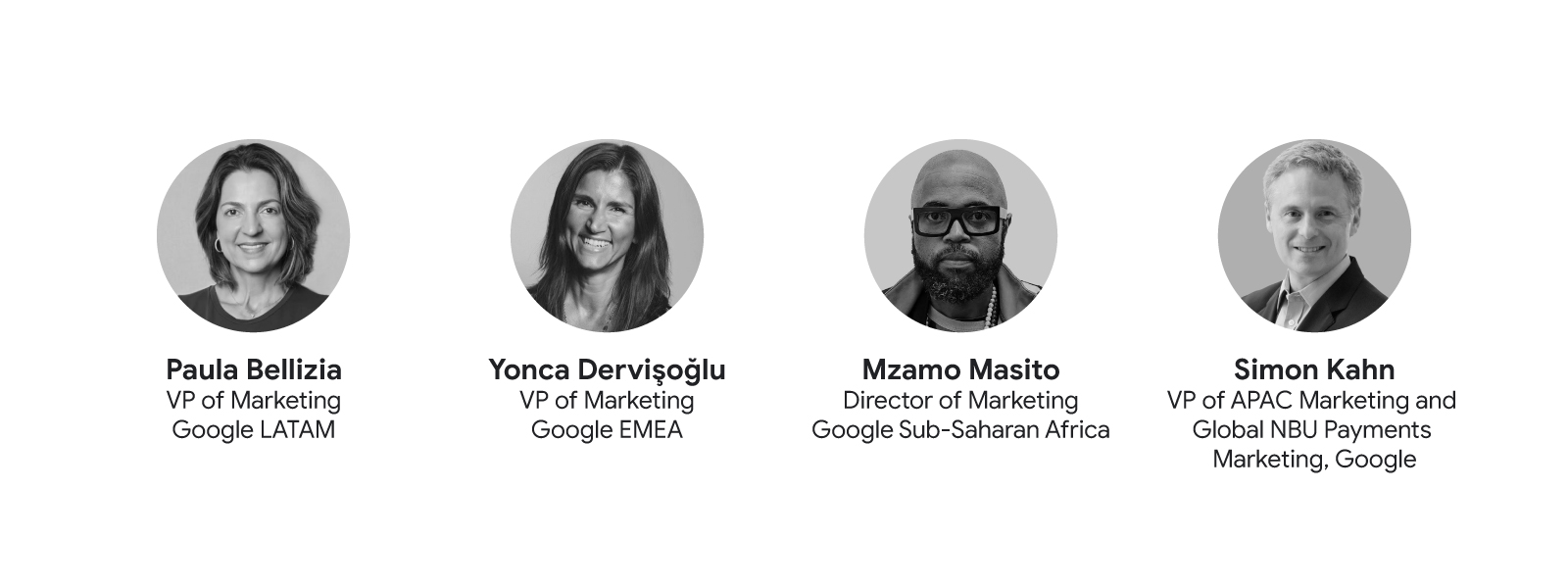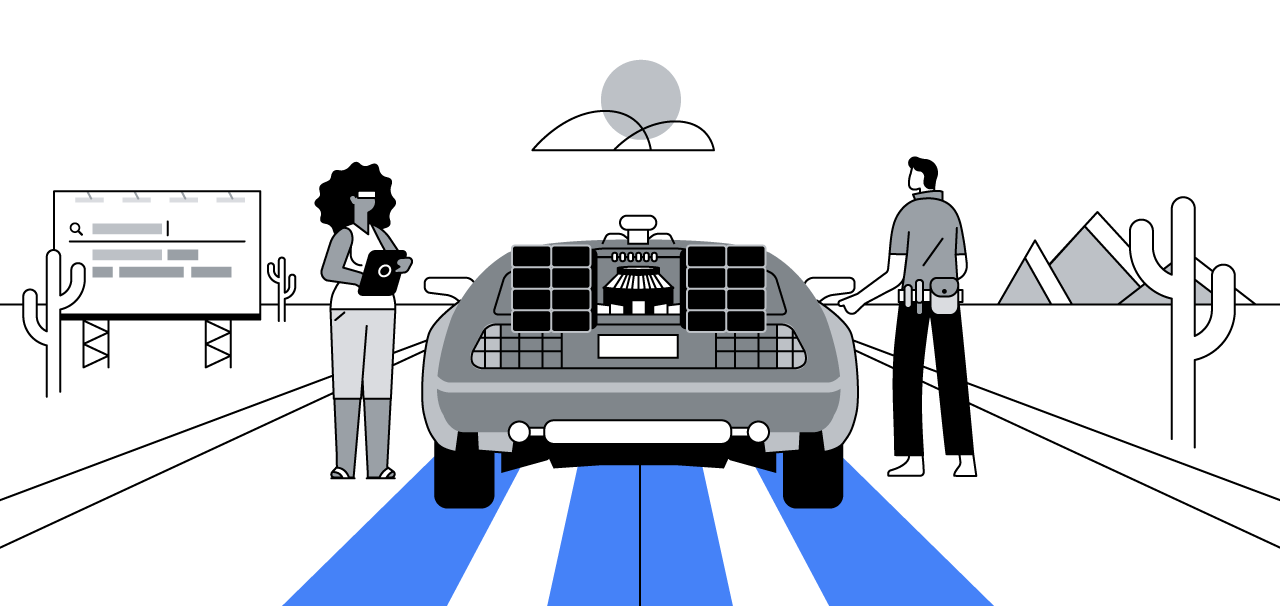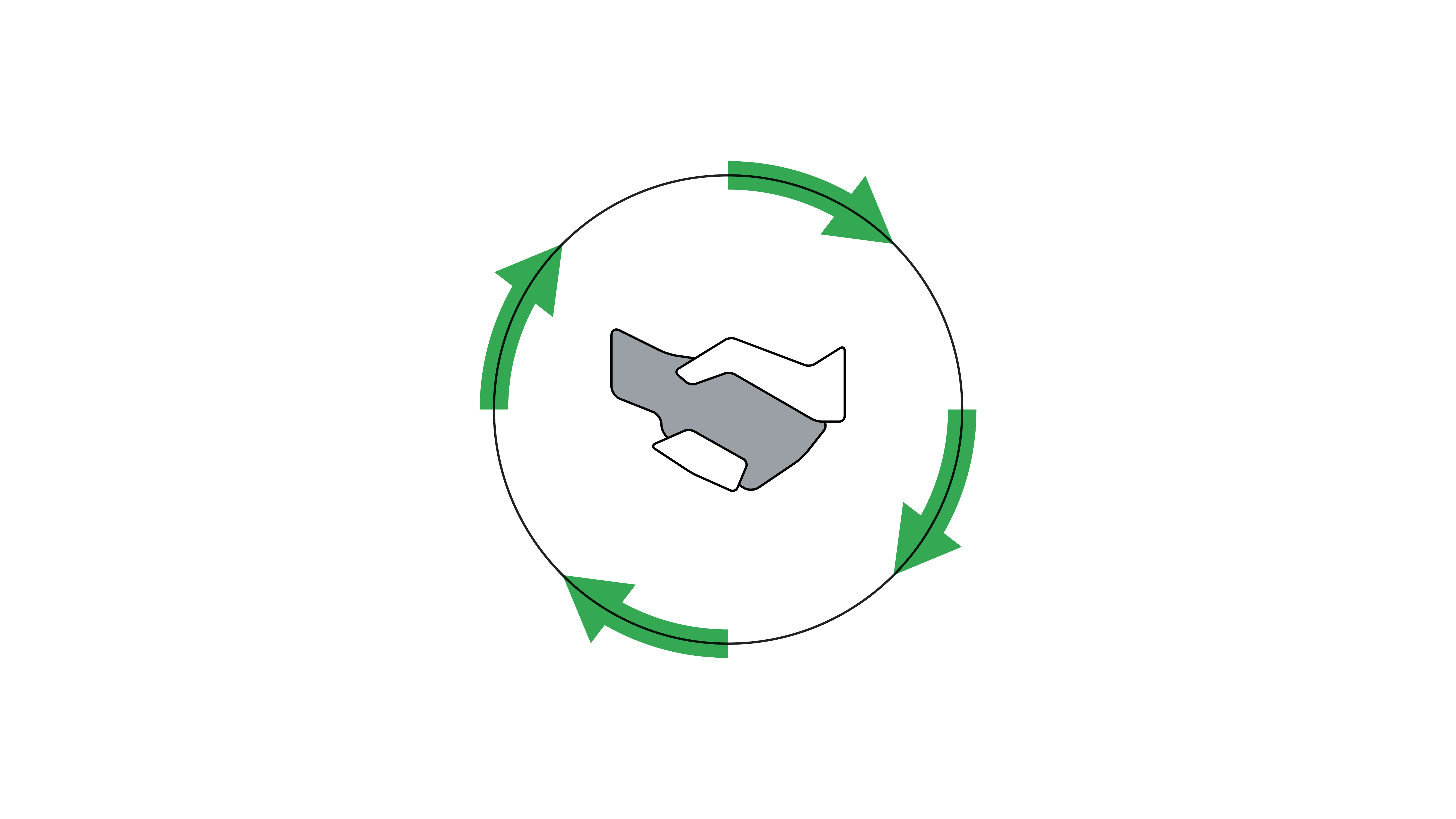For most people, a worldwide pandemic is the stuff of science-fiction novels or horror movies. It’s not something marketers would typically account for in their yearly plans. Still, in the face of global disruption of supply chains and business operations, as well as dramatic shifts in consumer habits (and spending), marketers around the world soldiered on. They took a moment, surveyed the new landscape, pulled some campaigns and tweaked others, and reassessed media buys and product launches. In short, they learned to navigate a new reality with no idea what a “new normal” would look like.
A year later, we’re still figuring things out. We’ve spoken with leading Google marketing execs from around the world about how a year of disruption affected their work — and how they’re moving forward.
Here’s what they had to say.

Managing from home
Across the world, teams found themselves working from home. Paula Bellizia, VP of marketing, Google Latin America, had a unique wrinkle added to this challenge: She joined the company in her role in the middle of the pandemic.
Each team in Latin America developed different ways of collaborating and building relationships while working from home.
“The pandemic had a direct effect on my experience — leading without any human interaction and still building a strong sense of belonging and partnership with all my teams across the region,” she says. And it’s not just a matter of business. “Small things like people not being able to grab a coffee with me or chat about life in informal moments.” No one had a real-life interaction in that period. “For this very reason, I made sure to have a one-on-one with each member of the team, getting to know people and how we can build a long-term relationship.”
Bellizia’s teams, spread across Latin America, thought a lot about a “sense of belonging.” That meant an all-hands meeting every two weeks and “investing in overcommunication to make sure people are keeping up with changes.”
Each team in Latin America developed different ways of collaborating and building relationships while working from home. “In Brazil,” she says, “teams are recognised as very cheerful and participative. And we try to bring that into virtual interactions. For example, having a virtual gathering where the employees were provided with different engagement opportunities, like through musical instruments as a way of remembering that each one has their individual talent, but together, as an orchestra, we are much bigger.”
Adjusting to acceleration
“History shows us that pandemics don’t change things. They just accelerate shifts that were already underway. As we grapple with a rapid transition to digital, it’s clear that COVID-19 has had a huge impact on our daily lives and our livelihoods,” says Yonca Dervişoğlu, VP of marketing, Google Europe, Middle East, and Africa.
Pandemics don’t change things. They just accelerate shifts that were already underway.
The digital world has acted as a lifeline for people and businesses. For example, 75% of consumers have tried new stores, sites, or brands, and the majority of consumers expect to integrate these into their lives after COVID-19. Looking ahead, Dervişoğlu says that “digital will be an accelerator of economic recovery. We all need to reflect on what this means for us. I see three clear implications.”
First, the average online shopping journey now has 140 touchpoints, so marketers need to show up and help customers navigate this complexity. Second, there needs to be more agility and use of data to quickly respond to changes in the market. And finally, more accountability is necessary. “We’re seeing that we can run brand campaigns with the same accountability as performance campaigns. And for someone who’s been in the industry as long as I have, this is like marketing nirvana.”
“Times have been tough, but I’m an optimist at heart,” says Dervişoğlu. “If we keep focusing on how we can help people and how we can create an inclusive economic recovery, I know we can end up in a better place than we were before. And that gives me hope.”
Increasing access for everyone
In Africa, three types of users are impacted by acceleration. “There are those that have yet to come online, those who are online but face significant internet and device challenges, and those with easier access to the web,” says Mzamo Masito, director of marketing Google Sub-Saharan Africa. Though they face unique challenges, they share a common need: equal opportunity in the digital economy. “The pandemic has done much to sustain, or in some cases increase, the gap where economic inclusion is concerned. The good news is we can play a role in moving things forward,” says Masito.
The first two groups are challenged by affordability. “For example, smartphones still cost up to 63% of a person’s average monthly income in Africa versus 16% in APAC. By focusing on a formula that combines low cost and high quality, marketers stand a greater chance to reach consumers effectively.”
The latter group can be reached by investing in an omnichannel approach. “Not only are consumers willing to try new brands based on speed, price, stock availability, and convenience, but they are also increasingly channel agnostic too,” says Masito. “Brands that are seeing success in spite of this, are those that are optimising for the right customer in real time. This is especially critical when many have increased responsibilities at home and need to spend less time thinking about where to find the best offer.”
The pandemic has done much to sustain, or in some cases increase, the gap where economic inclusion is concerned. The good news is we can play a role in moving things forward.
About 350 to 400 million Africans have access to the Internet but we still need to get 800 million more online. The democratisation of the digital economy starts with an understanding that if we don’t begin to democratise access to affordable data, network coverage, education, and smart devices, we stand to lose the very economies that sustain us all.
Figuring it out on the fly
“When the pandemic hit, we were forced to be agile,” says Simon Kahn, VP of marketing and global NBU/payments marketing, Google Asia Pacific. “We had to move across company silos and make decisions with imperfect information. We had to figure out how to not just work together, but work well, because we were in the same boat and there was an urgent need for us to act quickly.”
APAC was already used to working across time zones, with a distributed team in different markets, says Kahn, “but the transition was still painful and difficult.” With everyone working remotely, they had to rethink the fundamentals: how to develop creative work without being together on a shoot; how to run events when they were all working from home. “I was impressed by the creativity and the initiative of people to do things that were impactful and innovative.”
We needed to understand what the real needs were — getting reliable information into the hands of users, providing support for the disrupted education sector, and supporting businesses as they weathered the storm.
Their work became much more focused on marketing the products and services where they could be truly helpful. “We needed to understand what the real needs were — getting reliable information into the hands of users, providing support for the disrupted education sector, and supporting businesses as they weathered the storm,” Kahn says. “Doing work with a social slant can risk being performative, which is why we pared it down to marketing the products and services that were truly helpful by addressing basic needs, for example, mapping night shelters and promoting the vaccination rollout, and doubling down on areas that were foundational to forming the new normal, such as virtual education.”
A one-size-fits-all approach wasn’t going to work, because each market was in a different stage of dealing with the impact of the pandemic. Regional flexibility allowed them to customise their tone and respond to local needs. “We put a lot of trust in our local teams to do the right thing and have a strong handle on the zeitgeist of the market.”
Focusing on the long term
All of these lessons were learned and actions were implemented by teams that had no clear vision of the future. “I thought this would last three, four months,” says Bellizia. But, she adds, this wasn’t something necessarily unique to the pandemic. “It is difficult to predict the future in the long term. We are all attached to the short term, especially when we think about business. So, if I could have done something different, I would have allowed myself to read the signs in a way that is less attached to the short term.”





